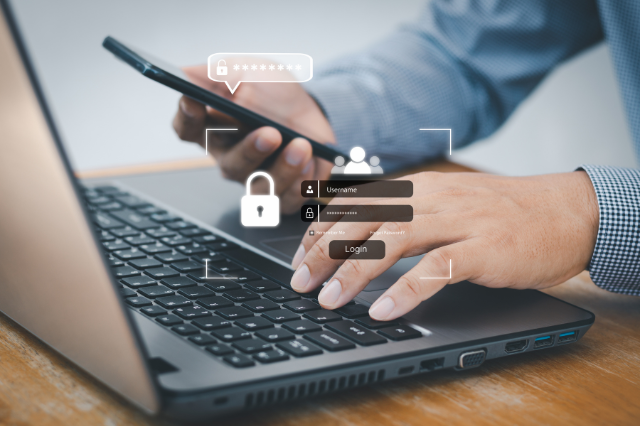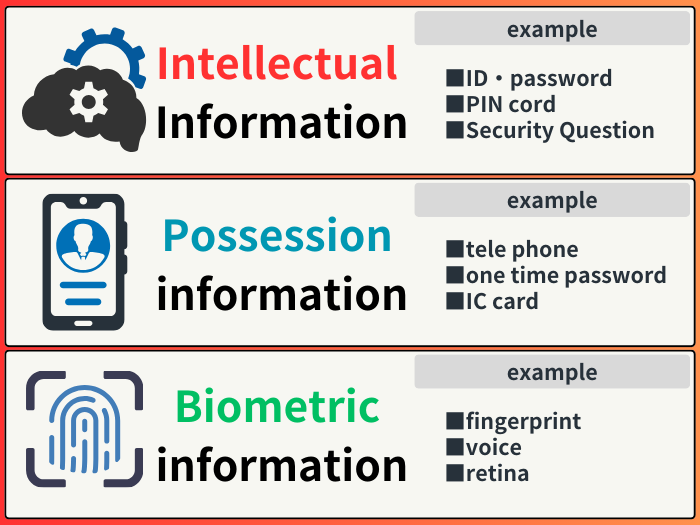What is the difference between two-step authentication and multi-factor authentication? Which is more secure?

Two-factor authentication is increasingly being required when logging in to smartphone apps and websites. The reason for this is to prevent unauthorized access, and its introduction is progressing because even if your regular ID and password are leaked somewhere, the second factor of authentication makes it less likely that unauthorized access will occur.
Meanwhile, in addition to two-step authentication, authentication methods with similar names such as multi-factor authentication and two-factor authentication are attracting attention. Do you know the difference between multi-factor authentication and two-step authentication? To put it simply, the difference is whether or not multiple factors are used for authentication.
In this article, we will explain the difference between two-step authentication and multi-factor authentication and explain which is more secure.
Table of Contents What is two-step authentication? What is multi-factor authentication? What is the difference between two-step authentication and multi-factor authentication? |
What is two-step authentication?
Two-step authentication refers to the use of an ID and password as a means of identity verification when logging into an app or website, but also the use of another method of authentication. The method adopted by many companies is a method in which a one-time password is sent via SMS or email after entering the ID and password, and authentication based on this two-step authentication is called two-step authentication.
What is multi-factor authentication?
Multi-factor authentication (MFA) is an abbreviation for Multi Factor Authentication, and refers to a method of authentication that combines two or more of the three factors: “intellectual information,” “possessed information,” and “biometric information.” Speaking of authentication, when you sign in or log in to Windows or a smartphone, you may be asked for your account name and password, which are the “intellectual information” of the three factors. Therefore, multi-factor authentication is achieved by authenticating “possessed information” or “biometric information” in addition to authenticating the intellectual information that you regularly use.

Difference between two-step authentication and multi-factor authentication
As mentioned above, there is a difference between two-step authentication and multi-factor authentication, but in fact, the authentication method that uses ID/password + one-time password, which is generally called two-step authentication, falls under the category of multi-factor authentication. With that in mind, we will explain the difference between two-step authentication and multi-factor authentication.
■Difference between two-step authentication and multi-factor authentication
| Two-step authentication | Multi-factor authentication | |
| Number of authentications | 2 times | 2 times |
| Number of factors | 1 | 2 or more |
You can scroll horizontally.
To put it simply, there are the differences. The difference between two-step authentication and multi-factor authentication is that if the number of factors required for authentication is one, it is two-step authentication, and if the number is two or more, it is multi-factor authentication. Also, a method of authentication that combines two factors is called two-factor authentication.
Which is more secure?
In conclusion, out of two-step authentication and multi-factor authentication, multi-factor authentication is more secure. The reason is that since authentication is performed by combining multiple factors, even if one factor is leaked, unauthorized access cannot be achieved unless the other factor is leaked. For example, if an ID and password are leaked somewhere, if a one-time password type multi-factor authentication service is implemented, unauthorized access can be prevented by using a one-time password (information possessed) that changes every 30 seconds and can only be verified on the user’s device. According to Microsoft’s research results on multi-factor authentication, the use of multi-factor authentication (MFA) reduces the risk of security breaches by 99.22% and reduces the security risk of password leaks by 98.56%. Based on these findings, multi-factor authentication is highly secure and is recommended if you want to take security measures seriously.
Reference information: Microsoft’s survey results on multi-factor authentication
For multi-factor authentication, we recommend Applippli-Key
If you want to use multi-factor authentication, we recommend “applippli-Key”, which can prevent unauthorized access at the OS level. applippli-Key is a service that enables multi-factor authentication on your computer’s login screen, and can be easily implemented with a monthly fee starting from JPY 600. Furthermore, since it does not require a directory server, which has been a bottleneck for other multi-factor authentication, it can be implemented even without specialized knowledge. If you would like to know more about applippli-Key, which allows anyone to easily utilize multi-factor authentication, please visit the website from the link below.
